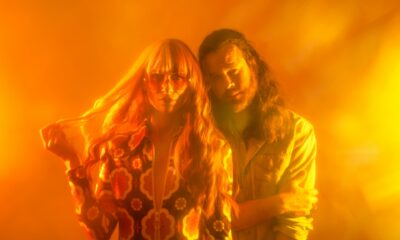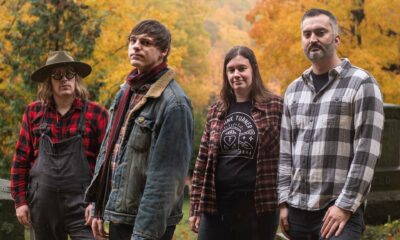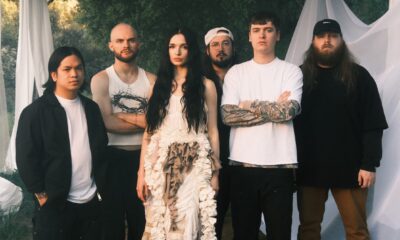Alternative/Rock
Cellista Discusses Her Evocative New “Laurie Green” Music Video [Premiere]
Along with the debut of the “Laurie Green” music video, we spoke with Cellista about how the song fits into her ‘Pariah’ album, the accompanying visuals, and how the video was shot.
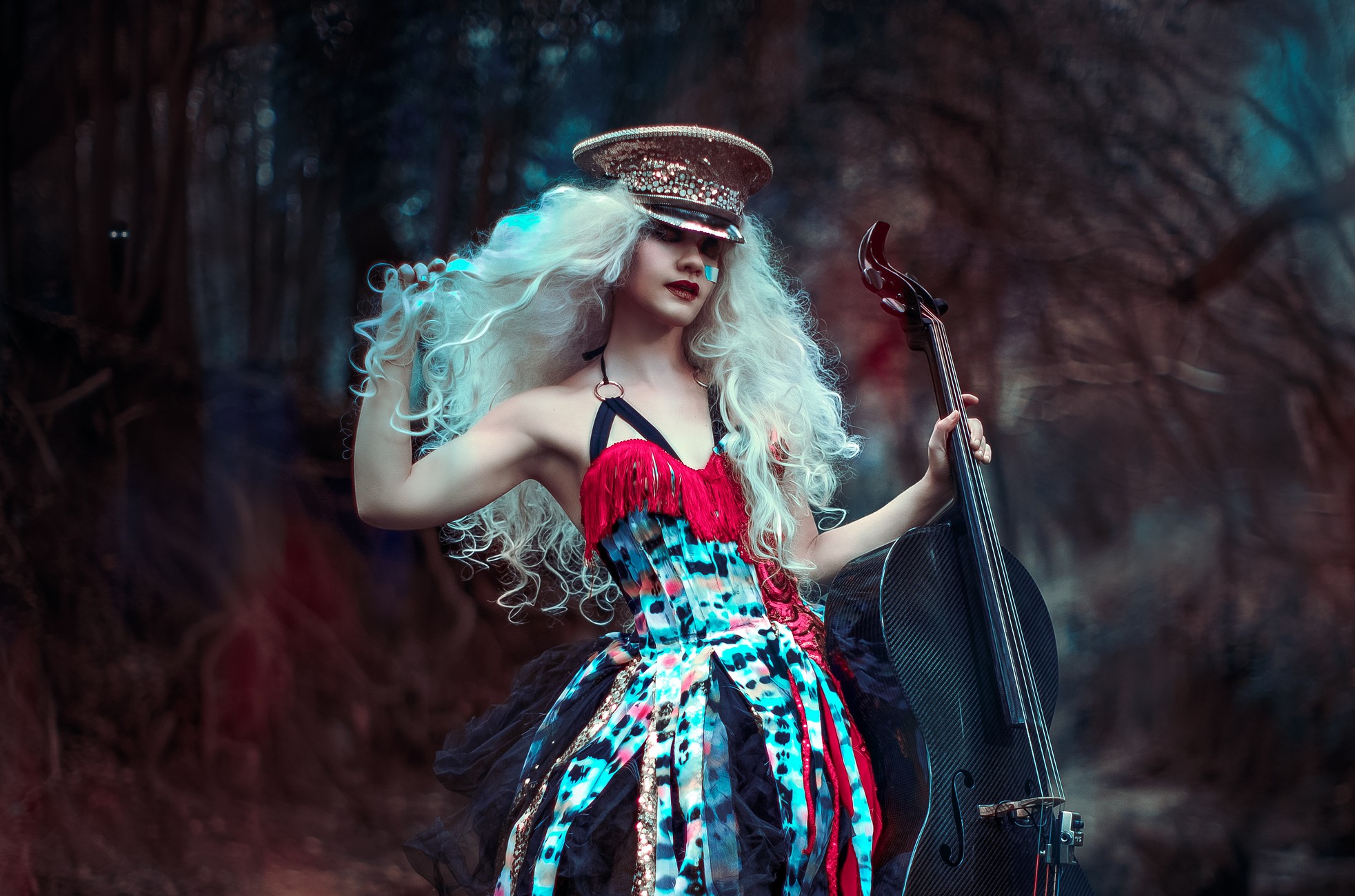
Thursday is here, which means that it’s time for another new music video from Cellista. We have partnered with the singer, songwriter, and composer for the month of February to help unveil a series of music videos that go as the visual accompaniment to her latest record Pariah, released this past October via Juxtapositions. For part three, we had a more thorough conversation with the artist regarding the music video that goes along with the song “Laurie Green,” one of the more critical moments in the Pariah album. Featuring both spoken word and operatic parts, the song, as well as the album, defies categorization and exists truly and definitively as its own groundbreaking creation.
Regarding “Laurie Green,” Cellista tells us:
“This is one of the most important movements in Pariah. It depicts her complete transfiguration into a Wanderer and her awareness and sense of self.”
Dreamlike and theatrical, Pariah is a conceptual fairytale album that brings together a wide-ranging, dynamic team of artists and performers. The album was recorded with optimal and immersive sound quality in mind, which is why it was mixed into 5.1.4 surround sound at the Skywalker Sound studio, the legendary sound effect, sound editing, sound design, and sound mixing company founded by George Lucas. Intended to break down barriers between the audience and performers, the project recounts the story of Pariah, a woman who’s castoff from her community for daring to speak truth to power. Following her exile from her home in Cloture, the story follows her encounters with apparitions, love, and her eventually reaching a level of acceptance of herself. This is resistance art in the purest and most revealing form, intended to defy convention and break down barriers.
In the following conversation, we spoke with Cellista specifically about “Laurie Green,” where it fits in within Pariah’s overall story, the music video, its production, and what she’d like viewers to take away from it.
I suppose the easiest way to start is by discussing the song “Laurie Green” itself. What can you tell us about the writing process behind this song? What were its inspirations or motivations?
Cellista: “‘Laurie Green’ is the most important movement of Pariah. It best demonstrates my penchant for multimedia art and curation. It was commissioned by Carla Canales as a part of her project Hear Her Song. The initiative is radical in its foundation and commissions female composers to write pieces inspired by women leaders. Hear Her Song is an incredibly innovative and important project that elevates women’s voices and gives classical music a future; one that is more inclusive and reflective of the communities it inhabits.
“Laurie Green, the subject of the piece, is the founder, president, and chair of the Board of The MAVEN Project. She shared her story with the poet Jacqueline Suskin who crafted a poem from the interview. Then the composer Mazz Swift set it to music, arranging it as a quartet. On the Pariah recording, my incredible ensemble was comprised of percussionist Brietta Greger, pianist and USC professor Joel Clifft, soprano Carla Canales, myself on cello… Dawn L. Troupe provided narration and David Möschler conducted us.
“I first encountered the work when I performed it in 2017 with Carla and pianist Kurt Crowley, the musical director of Broadway’s Hamilton. I fell in love with it the moment I saw the sheet music. It is rhythmically complex, although it looks simple on the page. Its syncopations, demands on the performers, and exposed, soaring cello lines require love and dedication to perform. My first thought upon reading it through the first time was: I can’t do this. I’m not good enough. I am not a real cellist.
For one of the first times in my performing life, I came to the conclusion that I needed to truly give the piece time and do more than just practice. I developed a relationship with it, allowed it to be difficult, and gave it the attention it deserved. Naturally, I fell in love.”
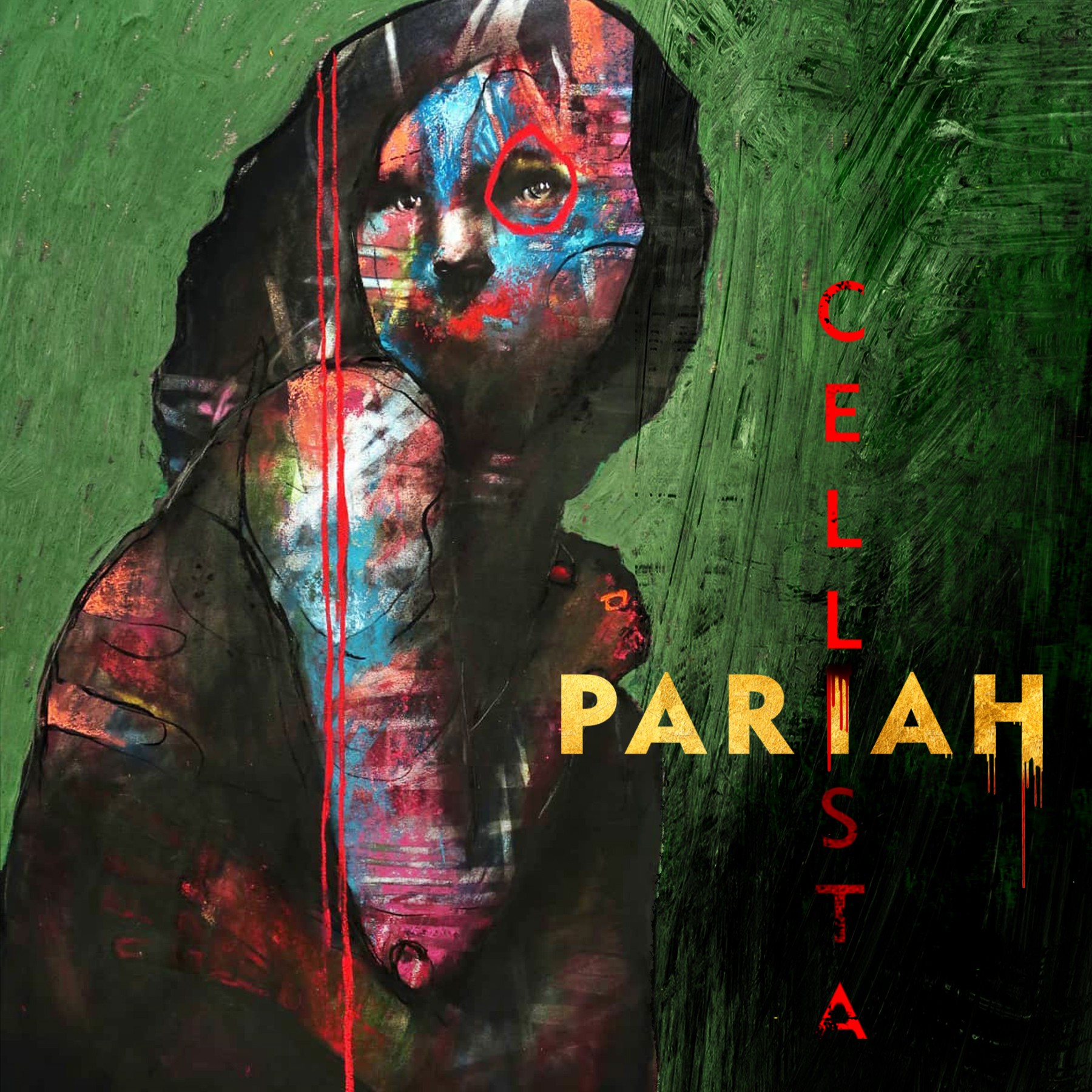
Artwork for the album ‘Pariah’ by Cellista
In terms of the greater story of Pariah, where does “Laurie Green” fit in? Where is Pariah at in her tale when we arrive at “Laurie Green?”
“‘Laurie Green’ is symbolic of Pariah’s psychic change and represents her transfiguration from exiled into self-exiled. The character of Laurie Green is typical of fairy-tale stories: a medicine woman whose presence illuminates a characters’ own introspective state. Her medicine is that of awareness and awakening. She is a spirit-like character being who appears to a sleeping Pariah within the very forest Pariah was banished to.
“I think, in some ways, I was hearkening back to a previous work I did with the great American illustrator Barron Storey (Neil Gaiman’s Sandman, Endless Nights, Lord of the Flies), in 2016. We did a dual exhibition at the San Jose-based gallery Anno Domini that depicted responses to the composer Olivier Messiaen’s seminal chamber music work Quartet for the End of Time. The quartet was written in a German prisoner of war camp during World War II, where the composer was held with his quartet mates.
“In that exhibition, I was exploring themes of escaping into freedom rather than escaping to freedom. Similarly, Pariah finds a way into freedom through her truth-seeking. She transfigures her reality and becomes Wanderer.”
I enjoy the alternation between the operatic vocals and the spoken word parts. What are some of the challenges of writing words and lyrics in such contrasting styles?
“The challenge of writing words to complement existing libretto is finding a room they can both inhabit. The opening of the piece is a vamped piano line, which, in its immersive surround sound mix, seemingly moves around the listener’s head. It’s a single note played on each beat of those first 6/8 measures. I crafted that sonic space to generate a place for my narrator to tell the story of Pariah’s awakening within the forest into which she was exiled. More simply, the single note reminded me of a heartbeat.
“I love this original 4-bar section for a number of reasons: Within the spaces, I can hear the body of the piano we recorded on at East West Studios. It sounds animalistic, like the steady up-and-down pulsing of a large animal’s ribcage as it takes breaths in. That wind-like sound of the damper pedal as Joel depresses the damper pedal. In the mix, I can still hear the mics we used with their bit of static. You can hear it each time the soprano comes in.
“In between those eighth notes, there was room left for me, for Pariah, and for my narration. You can find yourself in those spaces.”
For “Laurie Green,” specifically, but also for the album’s other songs, I feel like the lyrics probably end up coming before you write the music since they are very poetic in nature. Would that be a correct estimation?
“Although I did not write the lyrics within Mazz Swift’s piece, only the opening and closing narrator lines, I can say that in general, my writing of words comes before music and before those words comes visual art. Again, another area where I have felt tremendous guilt as a cellist. I think visually not sonically when I create and perform.”
The video is very evocative and quite impressionistic. Particularly for “Laurie Green,” but also for the album’s other tracks, did you have the visuals in mind when you were writing and recording the songs?
“Pariah’s album cover, although not impressionistic in the least, still contains an emotion that has managed to permeate the project. My process of visualizing my projects is usually prompted by a piece of art. Generally, that art comes from a source I know.
“So, for instance, most of my album art comes from artists I have encountered at San Jose’s Anno Domini art gallery. That’s how I met Joseph Loughborough, the UK-artist who painted the art. He also allowed me to use another work for my previous album. Then I commissioned the San Jose-based artist Jaclyn Alderete to draw illustrations for the accompanying book. I simply gave her the draft of my book and some simple requests, with rough mixes.
“I really feel, that in some ways, I wanted the audience to see through the lens of Pariah’s eyes. Surreal, mesmerizing, mystical, and full of moonlight. Jaclyn’s portrait of Laurie Green perfectly conveys this. I used it to open the film.
“The dancer, Lauren Baines is the one who managed to translate my vision to her character. Lauren has always been able to understand what I am unable to say. She is the quintessential academic/artist, in some ways. She studies and leans into her work. She gives it the time it calls for. She has worked with me since 2015 and has always treated my work with care.
“It’s truly Lauren’s film. Her choreography and performance are the backbone of this movement’s palette.”
Let’s discuss the “Laurie Green” music video. When are where was the video shot and what was that process like? Who did you work with to shoot the video in terms of producers, directors, and videographers?
“I shoot almost everything at my favourite San Francisco art refuge Little Boxes. The space, operated by working artists Christina Linskey and Aaron Simunovich, is a haven for artists of all disciplines. It’s one of the very few spaces in the Bay area where artists can feel free to create with abandon. It’s a space I cherish.
“I brought my cinematographer Bryan Gibel there with me to shoot the complete Pariah film for about seven hours. I have always produced and directed my films, including storyboarding etc. On this occasion, we shot Lauren in two different ways. Once while she performed on a blank set in the theater, utilizing some lighting. The second time, I placed her a large light box (wooden frame covered with clear plastic suspended from the ceiling). We pumped some fog into it along with a bit of back lighting and had her perform while we largely shot from the waste up. The addition of the tree branches she holds was spontaneous. I just loved the silhouettes they created. It seemed to add to the dreamlike state Pariah is in as she watches. My film editor Jennifer Gigantino made the video spark with her use of repetitions and after effects.”
Is there something specific that you would like people to take away from the video? Or would you prefer to let it stand on its own, and viewers can interpret it in their own unique way?
“To echo something I said earlier, I am just offering space to my audience. It’s theirs to take, hold, cast away, or transfigure. Who knows what they might find within it.”
-

 Music7 days ago
Music7 days agoTake That (w/ Olly Murs) Kick Off Four-Night Leeds Stint with Hit-Laden Spectacular [Photos]
-

 Alternative/Rock24 hours ago
Alternative/Rock24 hours agoThe V13 Fix #011 w/ Microwave, Full Of Hell, Cold Years and more
-

 Alternative/Rock1 week ago
Alternative/Rock1 week agoThe V13 Fix #010 w/ High on Fire, NOFX, My Dying Bride and more
-

 Features7 days ago
Features7 days agoTour Diary: Gen & The Degenerates Party Their Way Across America
-

 Culture1 week ago
Culture1 week agoDan Carter & George Miller Chat Foodinati Live, Heavy Metal Charities and Pre-Gig Meals
-

 Music1 week ago
Music1 week agoReclusive Producer Stumbleine Premieres Beat-Driven New Single “Cinderhaze”
-
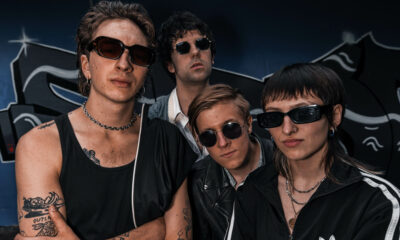
 Indie24 hours ago
Indie24 hours agoDeadset Premiere Music Video for Addiction-Inspired “Heavy Eyes” Single
-

 Alternative/Rock2 weeks ago
Alternative/Rock2 weeks agoThree Lefts and a Right Premiere Their Guitar-Driven Single “Lovulator”

